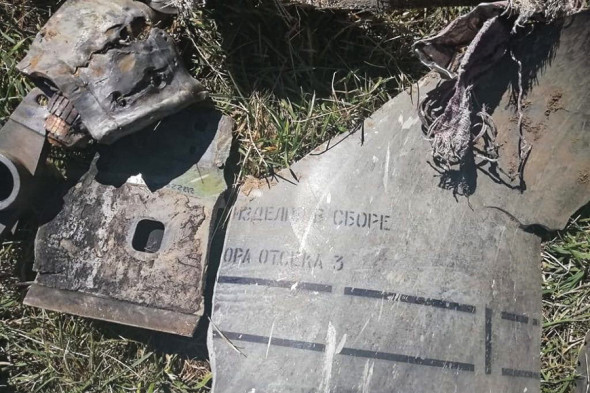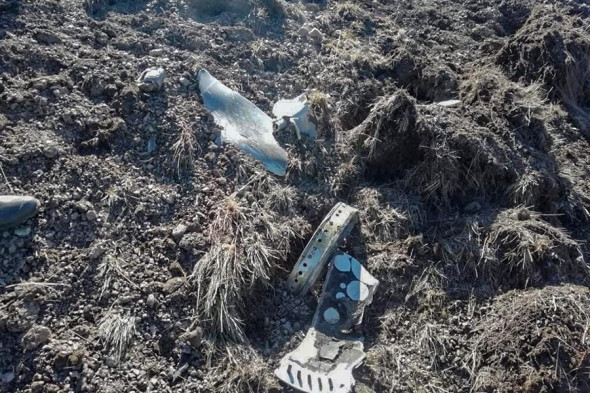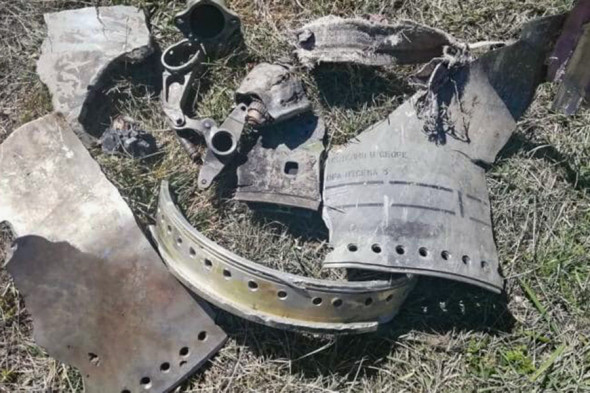On October 7th, in the mountains of Russia’s Dagestan, near the village of Chirag, local residents found fragments of an unknown shell and a crater from it.
Police officers and employees of the Ministry of Emergency Situations left for the scene, the administration of the Agul district told media.
“There is a funnel of an unknown sample. The examination must say what it is. The commission has left, we do not yet know what [happened] there. It’s in the mountains. A commission consisting of a representative of the district administration, the Ministry of Emergency Situations and the Ministry of Internal Affairs for Agulsky left there,” the administration said.
“Representatives of the Ministry of Internal Affairs for Dagestan went to the site to verify this information,” the press service of the department said.
Later, the administration clarified that the local residents heard the explosion about a week ago, and on the eve, on October 7th, a shepherd found the fragments of the shell on the border of the Agul and Dakhadayevsky regions.
Chirag village is located within 200-250 km from the war zone in Nagorno-Karabakh.
Armenia and Azerbaijan are armed with several Soviet-made tactical missile systems. For example, both sides possess the Tochka-U missile system.
On September 30th, Baku accused Yerevan of using these complexes for shelling settlements, and three missiles fired did not explode. Yerevan denied accusations of using the Tochka complexes, calling it disinformation from the Azerbaijani side.
The maximum range of these missile systems, however, is less than the distance from the conflict zone to Dagestan.
Since Soviet times, the 9K72 Elbrus missile systems with the R-17 missile have also remained in service with the Armenian army. Their maximum range is approaching 300 km, but there is no data on their use in the course of an armed conflict.
Also, the Armenian army has modern Russian-made Iskander missile systems with a range of up to 500 km.
As of now, it is not known if an Iskander has been used, but it likely hasn’t, although Yerevan did not rule out their use in case of aggravation of the situation.
“The military leadership has repeatedly stated that if the sword of Damocles in the form of Turkish F-16s hangs over the people of Nagorno-Karabakh, all measures will be taken, including the Iskanders,” said Armenian Ambassador to Russia Vardan Toghonyan.
Cases of the flight of shells from the zone of the Karabakh conflict to other countries have already been recorded. Several shells and rockets fired by the Azerbaijani army fell on the territory of Iran. On October 7, Azerbaijan officially apologized for the incidents.
Upon closer inspection of the photographs, however, it can be concluded that this is likely debris from a S-300 interceptor missile. Both Azerbaijan and Armenia operate the system, but Azerbaijan has the presumed export version called S-300PMU2.
It is likely that this is debris from specifically that system, earlier there were reports that Armenia was targeting various infrastructure in Azerbaijan, such as power plants, and it could be that some of the projectiles were intercepted by the S-300PMU2 and debris fell in Dagestan.
Separately, in order to attempt and defuse tensions, Russian President Vladimir Putin had spoken to both Armenian Prime Minister Nikol Pashinyan, and Azerbaijani President Ilham Aliyev in separate discussions.
The Kremlin’s statement also said that Putin has invited the foreign ministers of both countries to take part in a discussion in Moscow.
“The president of Russia is issuing a call to halt the fighting in Nagorno-Karabakh on humanitarian grounds in order to exchange dead bodies and prisoners,” the Kremlin said in a statement.
It said Russian Foreign Minister Sergei Lavrov would mediate the peace talks.
Yerevan has so far ruled out any talks between the two countries’ top diplomats as long as clashes are ongoing.
Earlier talks were held in Geneva but expectations were low and no statements were likely from the negotiations which were being conducted behind closed doors—and without Armenian participation.
Azerbaijan’s Foreign Minister Jeyhun Bayramov was to meet diplomats from France, Russia and the United States, who make up the “Minsk Group” that has sought a solution to the Karabakh conflict since the 1990s.
MORE ON THE TOPIC:









Armenia is so desperate now.
Artskin loser. LOL.
Spam-mamzer is first to comment, that figures. Starting your shift early?
“Also, the Armenian army has modern Russian-made Iskander missile systems with a range of up to 500 km.”
Armenia has export version with 300 km range and one missile on the launcher. 4 launchers and 4-8 missiles in total.